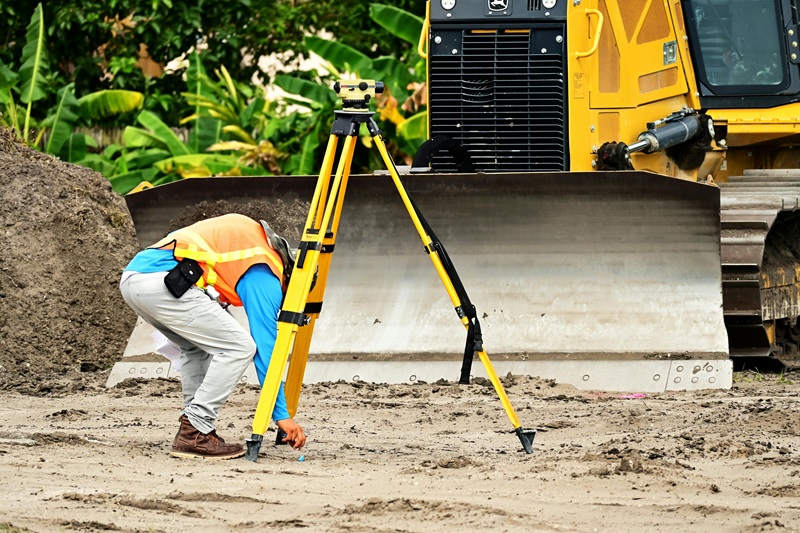by Harry Asnien
Share
by Harry Asnien
Share

Introduction
If you’ve ever looked at your land and wondered why you can’t build a driveway where you planned, or how a neighbor has the right to cross over a certain patch of your property, easements could be the key to understanding these hidden restrictions.
While the term may sound technical, easements are actually a common aspect of land ownership. Knowing what they are, where to find them, and how to address them can help you make more confident decisions about your property’s future.
In this article, we’ll break down what easements mean for you as a landowner and offer practical tips on how to navigate this sometimes confusing terrain.

What Are Easements?
Easements are legal agreements that grant a person or entity the right to use another person’s property for a specific purpose. Think of them as invisible permission slips written into the property’s legal record. For example, a utility company might have an easement to install and maintain power lines across your land, or a neighboring property owner might have the right to use a portion of your driveway for access. These arrangements can date back decades, sometimes existing long before you purchased your property.
Easements typically outline the exact location, purpose, and duration of the granted access. Some are permanent, while others can expire or change under certain conditions. By understanding the basics, you’re already one step closer to clarifying the rights and responsibilities tied to your land.

Why This Matters for Landowners
Easements matter because they can affect how you use and enjoy your property. For instance, if you’ve been planning a new structure or landscaping project, learning about existing easements is essential to avoid putting time and money into improvements that can’t move forward. Easements can influence where you place a fence, build a shed, or even lay down a new driveway.
In some cases, not knowing about an easement can lead to conflicts or unexpected costs. Imagine discovering that your neighbor has a legal right to cross a portion of your yard at all times—this might impact how you think about privacy or security. On the other hand, understanding these rights upfront allows you to consider them as you plan enhancements or even pass the property on to family members.

Practical Steps for Identifying Easements on Your Property
If you’re unsure whether your land has easements, you’re not alone. Many property owners only discover them when they’re ready to make changes. Here are a few practical steps you can take:
- Check Your Deed and Title Documents: The first place to look is often the property deed and title report. These documents, available through your county records office, may reference any known easements.
- Review Property Surveys: A professional land survey can identify boundaries, structures, and existing easements. If you don’t have a recent survey, hiring a licensed surveyor can offer clear insights into what’s on your land and where.
- Examine County and Utility Records: Local records—often found online—may list easements granted to utility companies or government agencies. If you suspect there’s a utility easement, reaching out to the local utility provider might confirm it.
- Consult with a Real Estate Attorney: If the documents are difficult to interpret, consider seeking guidance from a professional who can help you understand what’s recorded and how it affects your property rights.
By following these steps, you’ll gain a clearer picture of what’s allowed and what’s not, enabling you to plan accordingly.

Navigating Common Challenges and Considerations
Easements aren’t always straightforward. Sometimes they come with conditions that are open to interpretation, or you might find outdated easements that no longer serve anyone’s needs. Addressing these challenges can feel daunting, but there are ways to move forward:
- Clarify the Terms: If you’re unsure about the scope or purpose of an easement, take the time to clarify it. Understanding the specifics will help you avoid misunderstandings down the road.
- Communicate with Involved Parties: If a neighbor or local agency holds an easement on your land, open a respectful dialogue. Discussing shared access or maintenance responsibilities can prevent future disputes.
- Seek Professional Help: When in doubt, consult professionals like surveyors, attorneys, or title specialists who can confirm legal details and potentially help you negotiate modifications if the easement is outdated or unclear.
By knowing what to look for and who to ask, you can often resolve uncertainties before they turn into bigger problems.
Conclusion
Easements might seem complicated at first, but investing a little time in understanding them can make a real difference in how you manage and enjoy your property. By learning what easements are, why they matter, and how to identify and address them, you’ll be better equipped to navigate any hidden restrictions with confidence. With the right information at your fingertips, you can protect your interests, maintain control over your land’s future, and ensure a smoother path toward any improvements or plans you have in mind.
STAY IN THE LOOP
Subscribe to our free newsletter.
Leave A Comment
Understand zoning rules so you can make informed decisions before selling your property.
Discover how to resolve title issues, ensuring clear and confident ownership of your property.
Learn to interpret surveys so you can clarify boundaries, confirm acreage, and understand your property fully.





